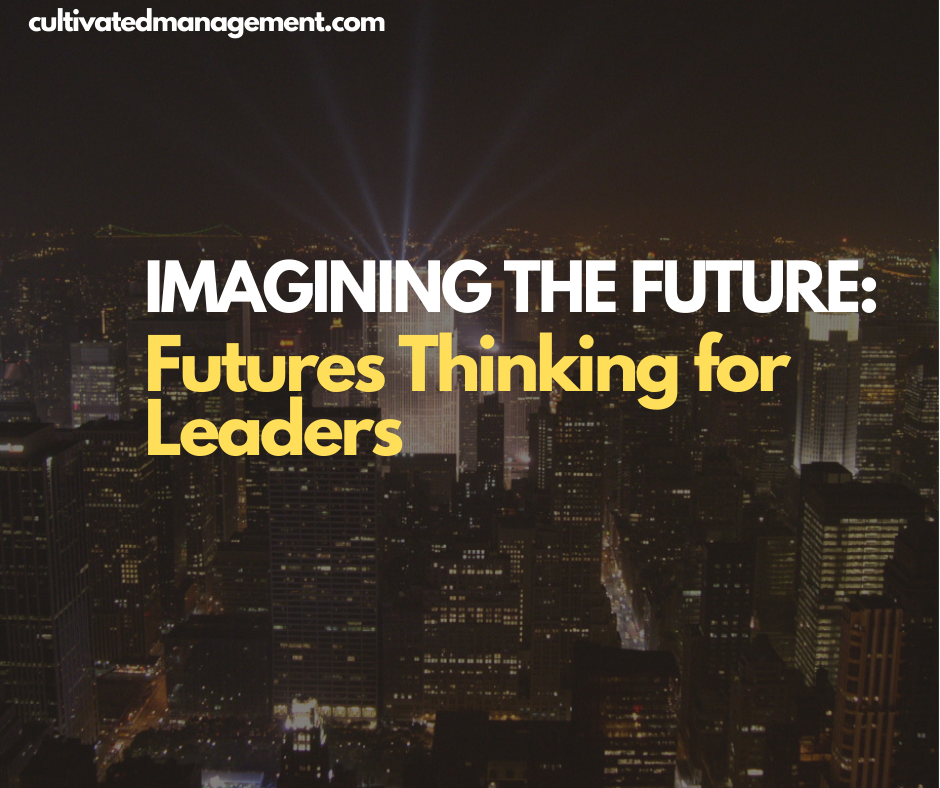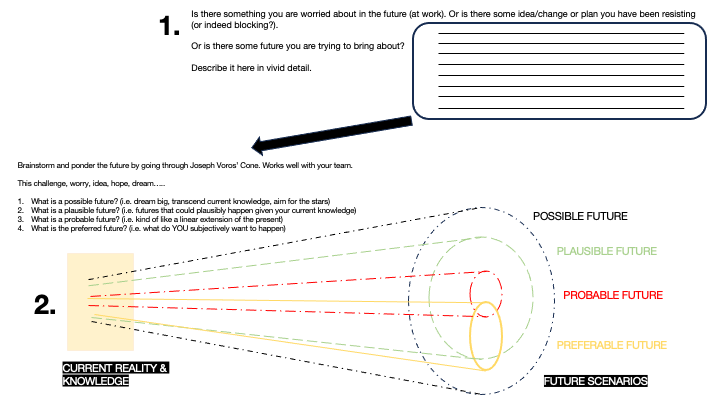Imagining the Future: Futures Thinking for Leaders
Discover techniques to foresee challenges, anticipate opportunities, and actively shape the future of your business through innovative strategies.

A lot of my work revolves around leading teams to brighter futures – and much of that work is about anticipating the future, deciding on a future, and then bringing it to life.
“The future belongs to those who can communicate about it.”
Good leaders don’t wait to discover the future; they create it. Designing and anticipating the future is the first fundamental step of my Releasing Business Agility model: paint a bright picture of the future and align people around it.
It’s harder than it sounds, but we all want to know our work is leading to something bigger and better. We want to understand our True North/Painted Picture when things get tough and connect to the vision and mission of the businesses we work within. Understanding business strategy is essential.
The painted picture is the emotional aspect of the future – essentially a story about what we are trying to bring to life. It’s a way to articulate the problems we face in business, painted with a positive, futuristic lens. It’s storytelling, not just listing goals or metrics.
“You must know for which harbor you are headed if you are to catch the right wind to take you there.” – Seneca
“No wind is favourable if you don’t know where you are going.”
Communicating future ambitions effectively provides direction – the wind guiding our sails, the harbour we are heading towards.
How to Anticipate the Future(s)
There isn’t a single future, but multiple potential futures. To explore these, I use Jim Dator’s four archetypes and the futures cone.
The Four Archetypes
- Continuity and Growth – The business continues as it is, improving incrementally over time. Optimisation and small improvements are key. Even here, leaders must actively pull levers, solve problems, and seek opportunities.
- Collapse – Without intervention, things deteriorate until the business fails. Many companies unknowingly head down this path. Awareness and proactive planning are essential.
- Discipline – Problems are fixed, good practices are reinforced, and performance is managed systematically. Discipline requires behavioural change, tough conversations, prioritisation, and evidence-based decision making.
- Transformation – A radically different future where business paradigms shift. Transformation is not incremental improvement; it’s redefining how the company operates. It requires vision, communication, and leadership capable of bringing people along on a truly audacious journey.
The Futures Cone
Once archetypes are understood, the futures cone allows teams to visualise potential futures, considering:
- Possible – Dream big, transcend current knowledge (often transformational).
- Plausible – Realistic futures given current understanding (continuity or collapse archetypes).
- Probable – Likely extensions of current trends (discipline archetype).
- Preferred – What people want to happen, which may differ from what the business needs.
“Any good leader will pay attention to what people prefer the future to be like. It gives strong clues on how to engage them if the plan differs from their preferred future.”
Running a futures cone session works best as an immersive workshop, using post-its, doodles, or stickers to collaboratively explore pros, cons, and potential paths.

Bringing the Future to Life
Imagining futures is the easy part. The challenge lies in communicating and mobilising the organisation to bring it to life. Whether the chosen future is ambitious, disciplined, or incremental, the key is:
- Thoughtful planning
- Clear communication
- Consistent execution
“The future belongs to those who can communicate about it. Good leaders don’t wait to discover the future, they create it.”
This is how we release business agility: by imagining a bright future and aligning the whole organisation to make it real.
👉 Ready to move faster towards your business goals while building a workplace people love? I help managers and leaders get there—through coaching, consulting, and training. See how I can help you.


